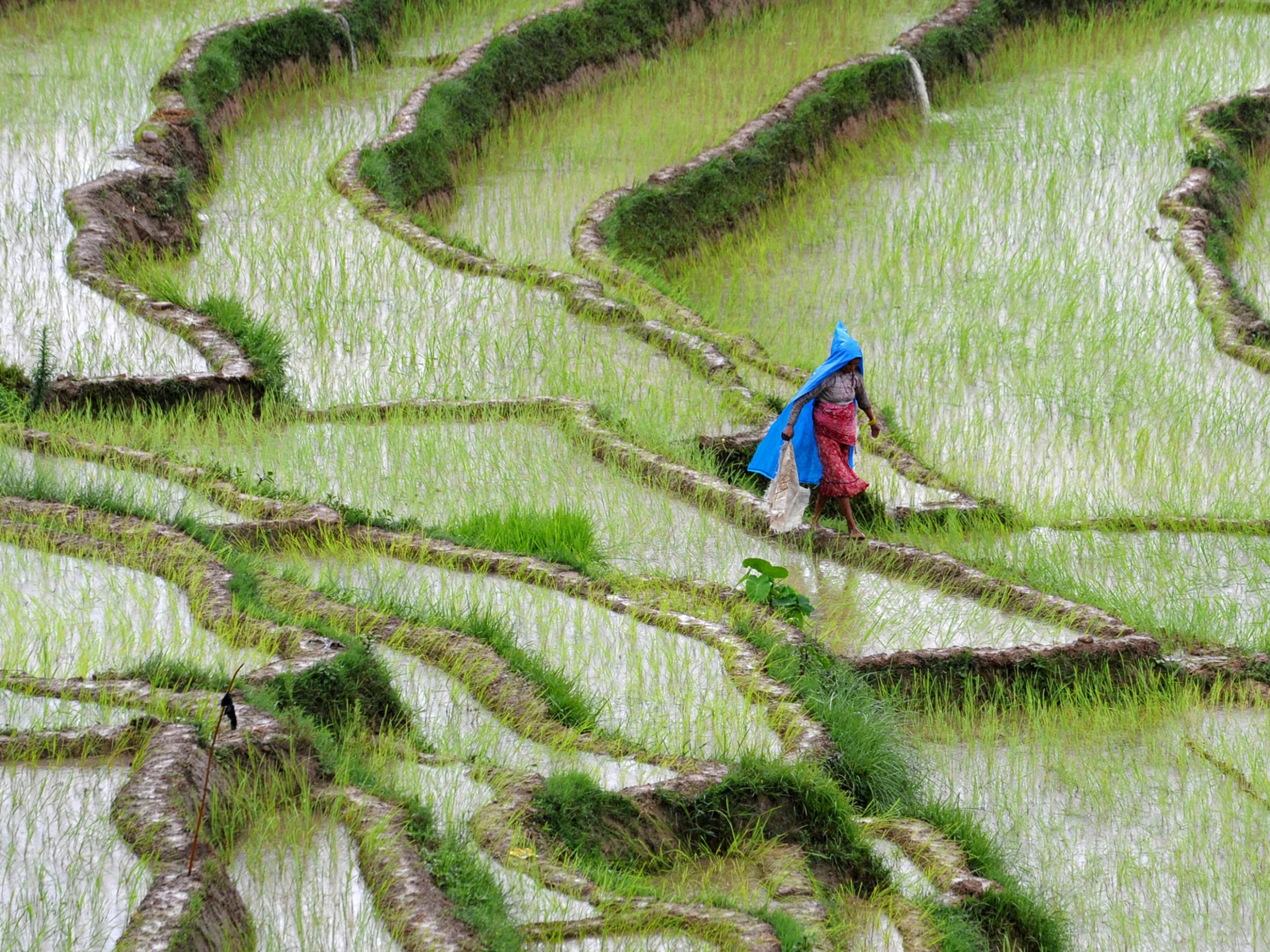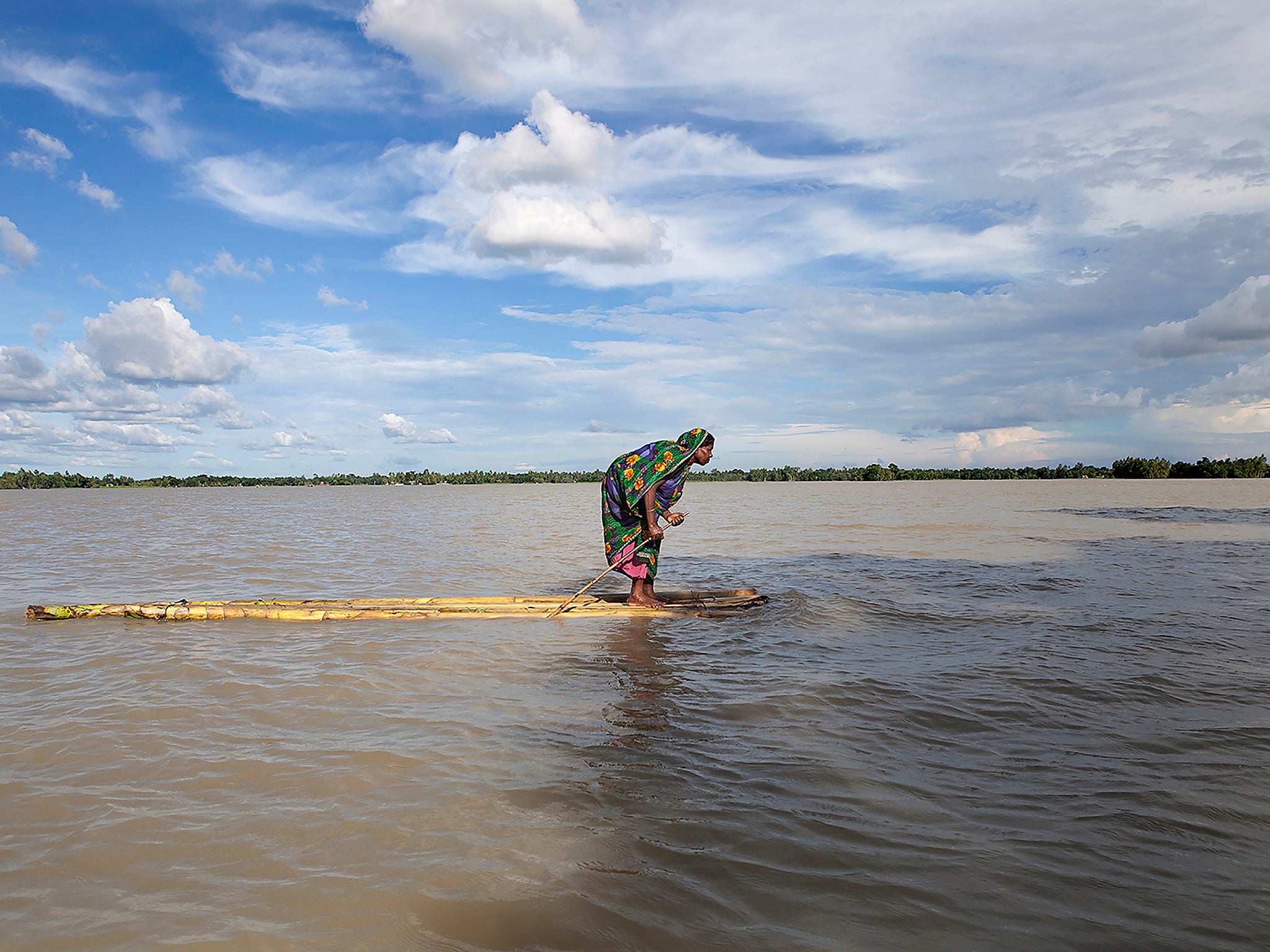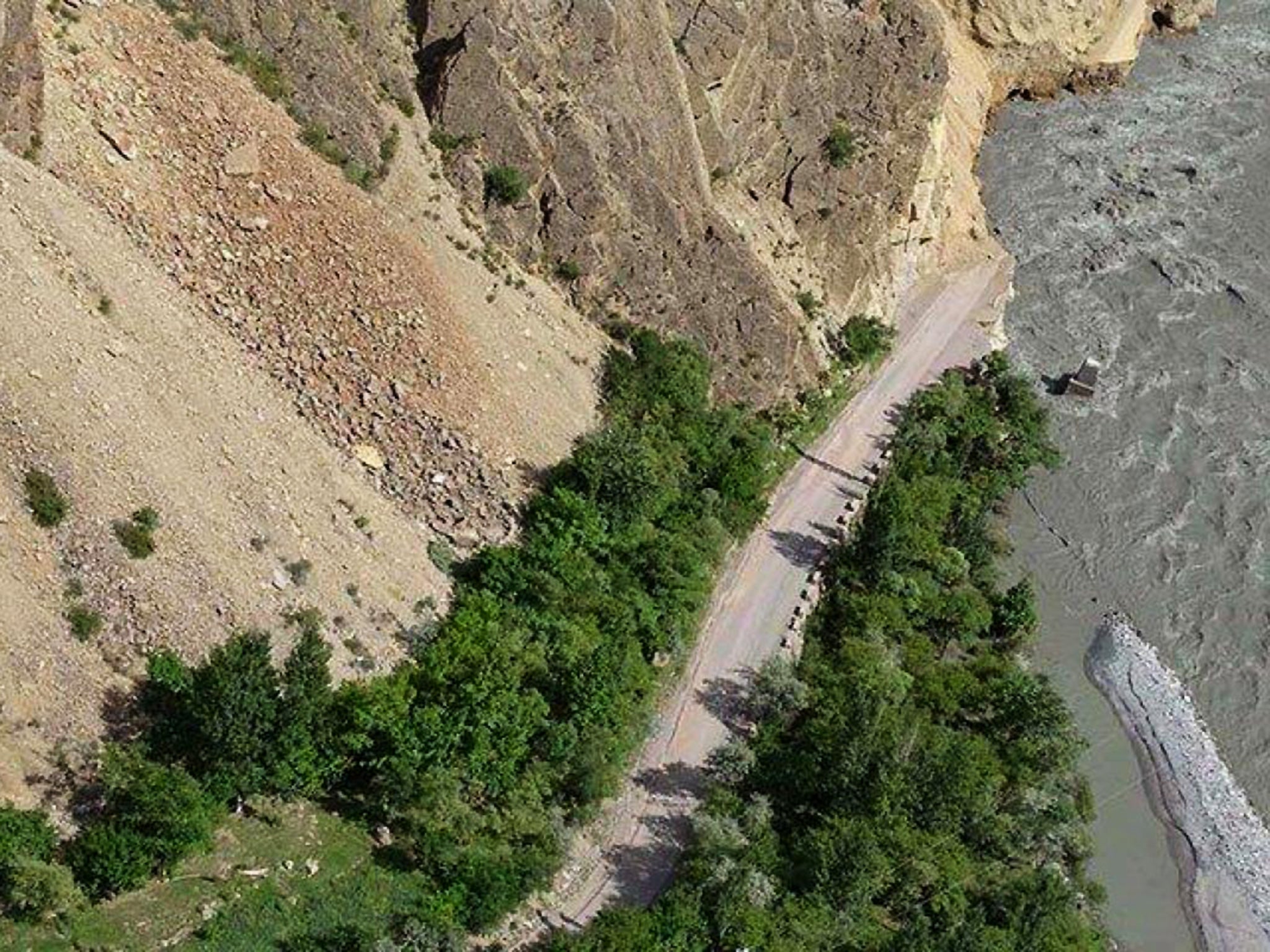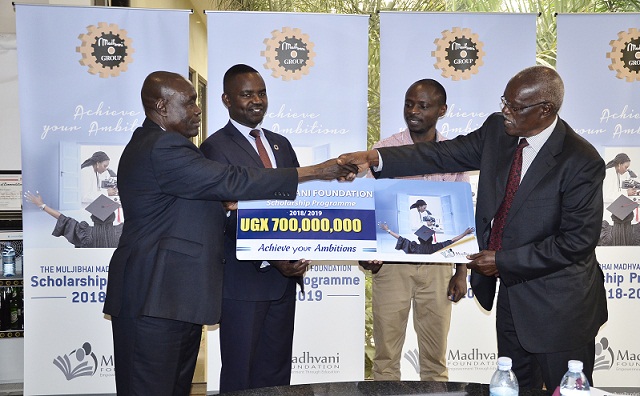
Copyright: Apollo Habtamu - ILRI
[NAIROBI] Smallholder
farmers
in Ethiopia, Kenya, Malawi, Mozambique and Tanzania are benefiting from
sustainable intensification practices that increase their capacity to
adapt to climate change.
The farmers have improved soil health and increased yields through a
food security
Sustainable Intensification of Maize-Legume Cropping Systems for Food
Security in Eastern and Southern Africa (SIMLESA) project launched in
2010 by the Australian Centre for International Agriculture Research.
SIMLESA is encouraging adoption of ‘conservation
agriculture’ (CA)-based methods such as zero tillage, crop residue retention and production of improved fodder crops.
Diversified farming system
“A first step towards food and nutrition security is a diversified
farming system. In addition to maize, sorghum and different types of
pulses, SIMLESA farmers have vegetable crops, fruit trees, and livestock
on their farms,” Daniel Rodriguez, associate professor at the
Queensland Alliance for Agriculture and Food Innovation, which has
provided support to SIMLESA’s research, told
SciDev.Net this month (18 May).
“In Kenya, farmers are working closely with scientists to identify
higher-yielding and stress-tolerant varieties for high- and low-
potential agro-ecological zones.”
Charles Nkonge, SIMLESA-Kenya
The project aims to increase maize-legume productivity and reduce
production risk by 30 per cent for 650,000 farming households by 2023.
Farmers have also been supported by the project through agriculture
knowledge exchange forums known as
innovation platforms, to take part in variety selection trials for maize and legume seeds.
Thus, drought-tolerant maize lines and legume and fodder varieties more resilient to climate change and suited to the SIMLESA
conservation
practices have been selected and scaled out, says Goshime Muluneh, a
researcher at the Ethiopian Institute of Agricultural Research,
Ethiopia’s SIMLESA partner organisation.
“The main purpose of including farmers in the variety selection trials
was to understand what they needed from the seeds,” says Muluneh. “We
were then able to screen and produce seed varieties according to the
farmers’ selected criteria.”
Ferdinand Makhanu, a smallholder from Kenya, says because of skills
learnt during CA techniques demonstration in 2010 held by the Kenya
Agriculture and Livestock Research Organisation on his neighbour’s farm,
he adopted spraying herbicide on his 0.8 hectare farm instead of
ploughing, dug holes only in seed-planting spots to reduce soil
disturbance and retained crop residues to facilitate soil nutrient
retention.
With traditional farming practices, Makhanu says, his harvest was
limited to six bags of maize, and less than one bag of beans. The
CA-based techniques have increased his harvest to 30-35 bags of maize
per acre, and he predicts yields increase as crop residues improves the
organic matter in the soil.
He no longer hires farm labour to plough, thus cutting labour costs by
about 60 per cent. His diversified productions include more nutritive
legume crops such as pigeon peas, lablab, velvet beans, soybean and
cowpeas.
Through the project, over 40 new farmer-selected maize varieties have
been released, which have been found to yield 30-40 per cent more than
traditional seeds under drought conditions, and 20-25 per cent more
under optimum conditions, says Mulugetta Mekuria, SIMLESA project leader
and a senior scientist and regional representative at International
Maize and Wheat Improvement Center, Zimbabwe.
Farmer-scientist enterprise
“In Kenya, farmers are working closely with scientists to identify
higher-yielding and stress-tolerant varieties for high- and low-
potential agro-ecological zones,” says Charles Nkonge, country
coordinator for SIMLESA-Kenya. “Farmers have achieved maize and bean
yields of 4.5 and 2.5 tonnes per hectare respectively, compared to 1.6
and 0.6 tonnes per hectare before the project.”
In Ethiopia, data gathered from 900 farming households shows that the
adoption of CA has increased net maize income by up to 35 per cent.
Incomes increased further when such practices were combined with
complementary inputs including improved seed varieties.
Goshime Muluneh, a farmer from Ethiopia, says scaling up conservation
agriculture is the next crucial step. “The government needs to implement
CA practices. If it does not promote conservation agricultural
practices, farmers simply won’t get the benefits,” Muluneh explains.
“Industrialising Africa’s CA will potentially cut postharvest losses accounting for up to US$48 billion each year.”
Richard Munang, UNEP Africa Regional Climate Change Programme
According to Richard Munang, coordinator of UN Environment Programme
Africa Regional Climate Change Programme, SIMLESA project is an
intervention maximising Africa’s farm-level productivity.
“It not only builds climate resilience by safeguarding soil health, but
it is compatible with the approaches used by smallholder farmers in
Africa who produce up to 80 per cent of the food on the continent,” he
tells
SciDev.Net.
“Industrialising Africa’s CA will potentially cut postharvest losses
accounting for up to US$48 billion each year, and potentially reverse
the need for imports currently costing the continent US$35 billion each
year. This measure will inject over US$80 billion annually worth of
enterprises, jobs and incomes into the continental economy.”
Efforts to scale up CA, Munang explains, must be in tandem with efforts to scale decentralised
clean energy
dedicated to powering agro-value processing, efforts to ensure
affordable, market driven financing for farmers, efforts to establish
adequate infrastructure systems that link production areas to markets
and collection points towards building sustainable agro-industries.
According to Munang, CA approaches are compatible with those used by African smallholders.
Holistic interventions crucial
Inclusion of farmers in the variety selection trials is important as end-user feedback is always a critical aspect in ensuring
research and development that responds to potential user priorities.
To reap maximum benefits, policymakers across various complementary
ministries should prioritise harmonising their policies to scale up CA
from farm-level production to the entire value chain to build
sustainable agro-industries, Munang says.
Jonathan Muriuki, Kenya country representative of the World Agroforestry
Center, says conservation agriculture has been proven to increase
productivity in pilot projects across the world.
But CA presents challenges to farmers mainly from weed management and
competition for biomass required to be used for soil cover and livestock
feed at the same time. Muriuki says continuing scientific
investigations are geared towards overcoming these challenges
Change of mindsets needed
In principle, there are gains in labour savings as well as productivity
increases but the main challenge to smallholder farmers is a change of
mindsets to adopt reduced till approaches, especially those involving
judicious use of herbicides and access to the specialised equipment
necessary for production efficiency.
“Use of conservation agriculture as well as intercropping of cereals and
legumes, even enhanced by inclusion of trees, is a winner for current
and future generations,” Muriuki says.
Farmers are the main investors in agriculture and expend their land,
labour and management skills in agricultural production while informed
by specific objectives.
Understanding the farmers’ context from their own intellectual
contribution ensures breeding and agronomic efforts are better targeted
and have a chance at application, which translates to success. “Leaving
out farmers in innovation platforms fails to take fine-scale context in
scientific investigations,” explains Muriuki.
Conservation agriculture is necessary for policymakers, especially because of massive land degradation, climate change and
pollution challenges.
Scientists, however, need to package conservation agriculture’s evidence
in ways that are appealing to policymakers to boost its scale-up,
Muriuki adds.
The SIMLESA, says Muriuki, is one of the earliest projects to
acknowledge the role of agro-ecological interactions at play in the
desirable
sustainable agriculture referred to as ecological intensification.
This piece was produced by SciDev.Net’s Sub-Saharan Africa English desk












 Controlled environment agriculture is viewed as another important technology to feed a growing world population.
Controlled environment agriculture is viewed as another important technology to feed a growing world population.




 US scientists have found 121 different pesticides in samples of bees, wax and pollen, lending credence to the notion that pesticides are a key problem. “We believe that some subtle interactions between nutrition, pesticide exposure and other stressors are converging to kill colonies,” said Jeffery Pettis, of the ARS’s bee research laboratory.
US scientists have found 121 different pesticides in samples of bees, wax and pollen, lending credence to the notion that pesticides are a key problem. “We believe that some subtle interactions between nutrition, pesticide exposure and other stressors are converging to kill colonies,” said Jeffery Pettis, of the ARS’s bee research laboratory.
